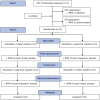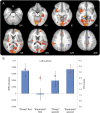Placebo effect of medication cost in Parkinson disease: a randomized double-blind study
- PMID: 25632091
- PMCID: PMC4345649
- DOI: 10.1212/WNL.0000000000001282
Placebo effect of medication cost in Parkinson disease: a randomized double-blind study
Abstract
Objective: To examine the effect of cost, a traditionally "inactive" trait of intervention, as contributor to the response to therapeutic interventions.
Methods: We conducted a prospective double-blind study in 12 patients with moderate to severe Parkinson disease and motor fluctuations (mean age 62.4 ± 7.9 years; mean disease duration 11 ± 6 years) who were randomized to a "cheap" or "expensive" subcutaneous "novel injectable dopamine agonist" placebo (normal saline). Patients were crossed over to the alternate arm approximately 4 hours later. Blinded motor assessments in the "practically defined off" state, before and after each intervention, included the Unified Parkinson's Disease Rating Scale motor subscale, the Purdue Pegboard Test, and a tapping task. Measurements of brain activity were performed using a feedback-based visual-motor associative learning functional MRI task. Order effect was examined using stratified analysis.
Results: Although both placebos improved motor function, benefit was greater when patients were randomized first to expensive placebo, with a magnitude halfway between that of cheap placebo and levodopa. Brain activation was greater upon first-given cheap but not upon first-given expensive placebo or by levodopa. Regardless of order of administration, only cheap placebo increased activation in the left lateral sensorimotor cortex and other regions.
Conclusion: Expensive placebo significantly improved motor function and decreased brain activation in a direction and magnitude comparable to, albeit less than, levodopa. Perceptions of cost are capable of altering the placebo response in clinical studies.
Classification of evidence: This study provides Class III evidence that perception of cost is capable of influencing motor function and brain activation in Parkinson disease.
© 2015 American Academy of Neurology.
Figures




Comment in
-
The pharmacodynamics of placebo: expectation effects of price as a proxy for efficacy.Neurology. 2015 Feb 24;84(8):766-7. doi: 10.1212/WNL.0000000000001294. Epub 2015 Jan 28. Neurology. 2015. PMID: 25632090 No abstract available.
-
Author response.Neurology. 2015 Aug 25;85(8):742-3. doi: 10.1212/WNL.0000000000001879. Neurology. 2015. PMID: 26304681 No abstract available.
-
Placebo effect of medication cost in Parkinson disease: a randomized double-blind study.Neurology. 2015 Aug 25;85(8):742-3. Neurology. 2015. PMID: 26528522 No abstract available.
References
-
- Rao AR, Monroe KB. The effect of price, brand name, and store name on buyers' perceptions of product quality. J Mark Res 1989;26:351–357.
-
- Allison RI, Uhl KP. Influence of beer brand identification on taste perception. J Mark Res 1964;1:36–39.
-
- Lee L, Frederick S, Ariely D. Try it, you'll like it: the influence of expectation, consumption, and revelation on preferences for beer. Psychol Sci 2006;17:1054–1058. - PubMed
-
- Tracey I. Getting the pain you expect: mechanisms of placebo, nocebo and reappraisal effects in humans. Nat Med 2010;16:1277–1283. - PubMed
-
- McRae C, Cherin E, Yamazaki TG, et al. Effects of perceived treatment on quality of life and medical outcomes in a double-blind placebo surgery trial. Arch Gen Psychiatry 2004;61:412–420. - PubMed
Publication types
MeSH terms
Substances
LinkOut - more resources
Full Text Sources
Other Literature Sources
Medical
Research Materials
